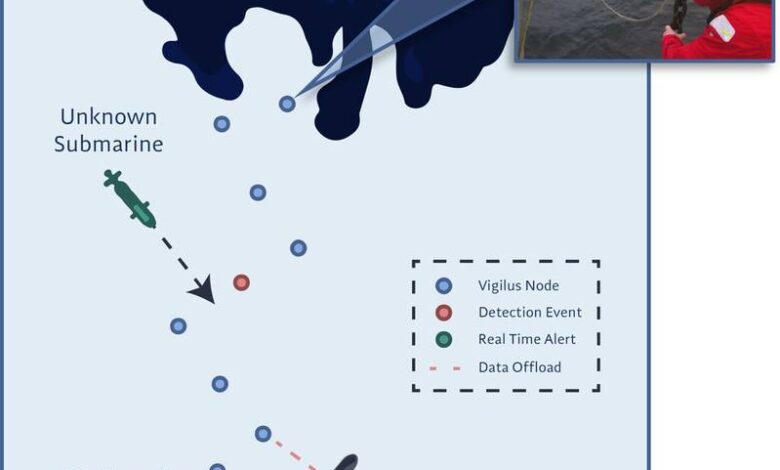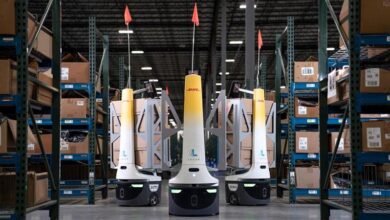Cellula Robotics Unveils Vigilus Underwater

Canadian-based marine technology company Cellula Robotics on Tuesday announced the launch of its latest innovation in underwater robotics, Vigilus.
The state-of-the-art submersible surveillance array is comprised of acoustically-meshed environmental sensor nodes, and according to Cellula Robotics, it is poised to revolutionize underwater monitoring and security.
The Vigilus nodes, strategically positioned on the seafloor multiple kilometers apart from one another, form an interconnected network of listening stations that act as an underwater “trip wire”. The nodes boast a compact, cable-less design, facilitating effortless deployment from small watercraft or covertly via a large uncrewed underwater vehicle (UUV), even in challenging environments such as beneath ice sheets.
Each Vigilus node is equipped with sensors capable of collecting, processing, encrypting and responding to acoustic and environmental data. This functionality ensures the rapid generation of alerts, which can be effortlessly shared among nodes and transmitted to other assets in the vicinity, including UUVs, as well as to Vigilus’ shoreside gateway, which provides secure, near real-time alerts for timely data-driven decisions, Cellula Robotics said. Furthermore, Vigilus offers an additional layer of strategic advantage, as each node can emit acoustic pings to serve as a deterrent while deployed.
The genesis of Vigilus can be traced back to a successful prototype developed for the Royal Australian Navy (RAN), the manufacturer noted.
Innovation, Science, and Economic Development Canada has awarded a contract to Cellula Robotics Ltd. for its Vigilus array following a successful call for proposals under the Innovative Solutions Canada Testing Stream. Transport Canada is acting as the technical authority for the contract.
Neil Manning, CEO of Cellula Robotics, said, “We are excited to bring this innovation to the market. Vigilus will empower our customers to operate with enhanced confidence and security in the most challenging underwater environments, including the Arctic region.”



